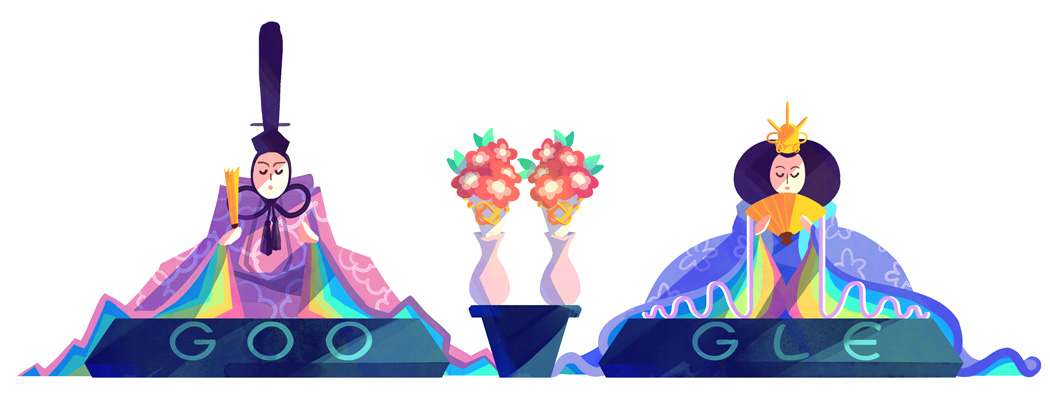ひな祭り 2017
 |
| ひな祭り 2017 |
ひな祭り 2017
Girls' Day 2017
江戸時代までは和暦(太陰太陽暦)の3月の節句(上巳、桃の節句)である3月3日(現在の4月頃)に行われていた。明治の改暦以後は一般的にグレゴリオ暦(新暦)の3月3日に行なうことが一般的になった。一部の地域では、引き続きに旧暦3月3日に祝うか、新暦4月3日に祝う(東北・北陸など積雪・寒冷地に多い)。
旧暦の3月3日は桃の花が咲く時期であるため「桃の節句」と呼ばれることが多い。
また、江戸時代には9月9日の重陽の節句に雛人形をもう一度飾る「後(のち)の節供」という飾る習慣があった。
香川県三豊市の旧仁尾町では、雛祭りは行わず、八朔に雛人形を飾る。これは、戦国時代に仁尾城が落城したのが旧暦3月3日であったためとされる。
兵庫県たつの市御津町室津地区では、ひな祭りを旧暦8月1日に行っていた。「室津追考記」によると、永禄9年1月11日(1566年2月1日)、室山城主・浦上政宗の次男・清宗と小寺職隆の娘との間で挙げた結婚式の夜に、かねてより対立関係にあった龍野城主・赤松政秀の急襲を受けて正宗は清宗もろとも戦死し、花嫁も亡くなり室山城は落城した。室津の人々はこの出来事を悼み、非業の死を遂げた花嫁の鎮魂のために3月3日ではなく、半年遅れの八朔に雛祭りを延期したとされる。戦後この風習は長く途絶えていたが、近年になって町おこしの一環の「八朔のひな祭り」として復興された。
歴史[編集]
Girls’ Day, also known as “Hinamatsuri” or “Doll’s Day,” is a day-long Japanese festival to wish for the health and wellbeing of young girls. On March 3rd, sprawling displays of ornate dolls sparkle atop 7-tiered red carpet platforms—with each step representing a different layer of society from the Heian period (an era considered to be the peak of the Japanese imperial court). In the traditions of this time (794-1185), straw hina dolls were floated out in little boats, taking with them the troubles and dark spirits of the believers who set them out to sea.
This Doodle features the stars of the first platform: the Emperor who holds a ritual baton in his hands and the Empress with her fan. Between them, two vases of peach branches were said to bring good luck, as the very beginnings of their seasonal bloom often corresponded with this day of feminine celebration.

No comments:
Post a Comment